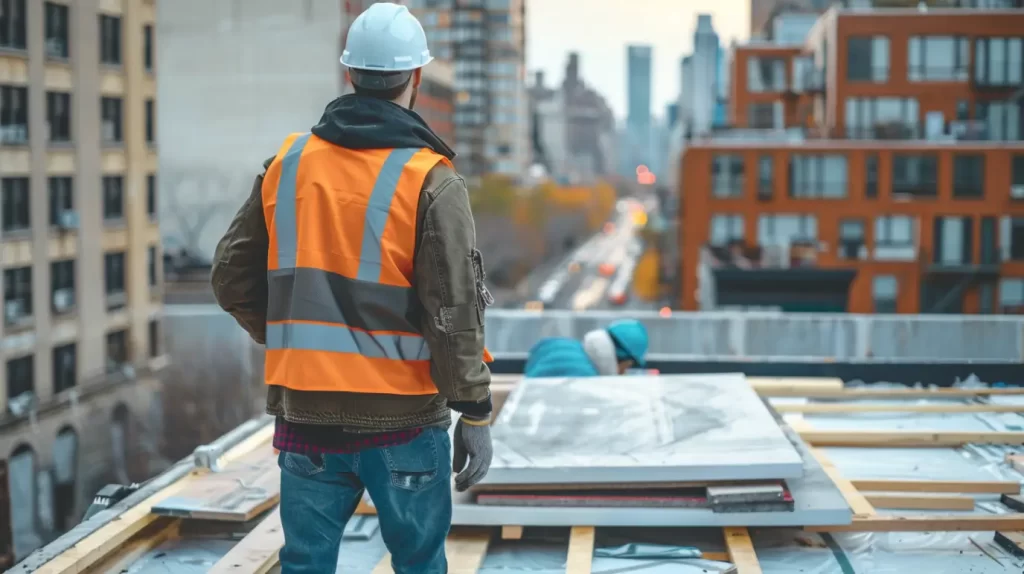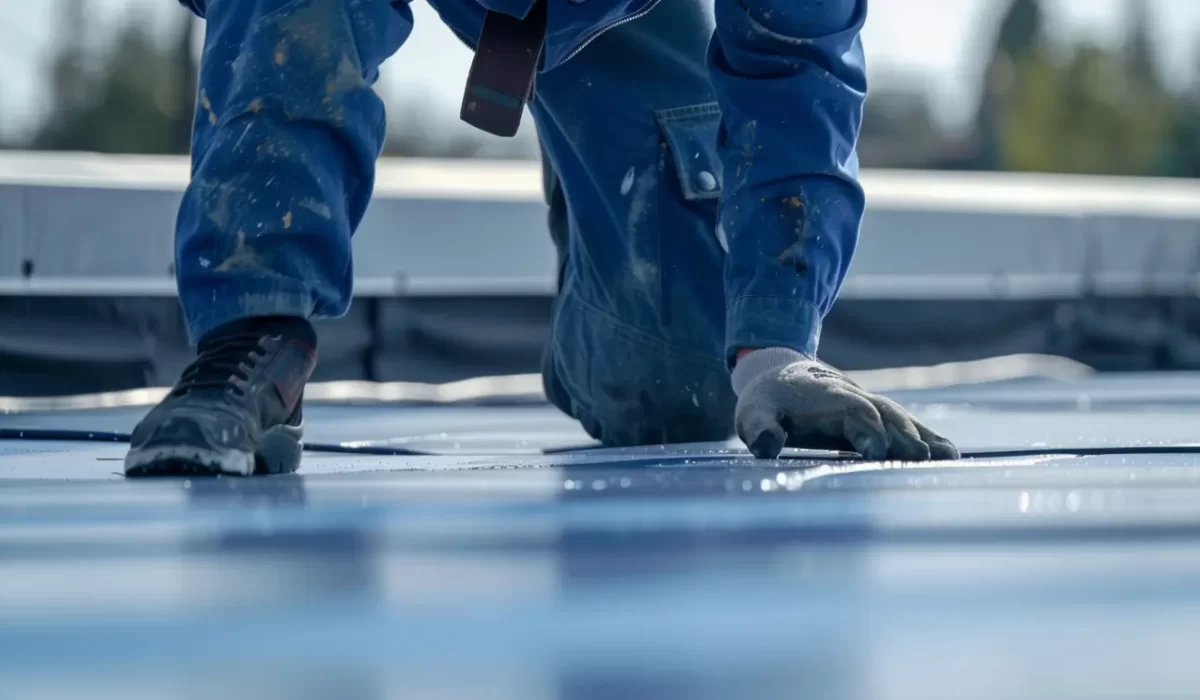Managing roofing safety for multi-unit properties brings unique challenges that demand careful attention from property managers and owners. With many residents and complex building structures, safety standards are not just regulatory requirements—they’re essential best practices. Protecting tenants, maintaining property value, and ensuring legal compliance all depend on following strict roofing safety protocols. At Fontaine Roofing, our award-winning team understands the stakes for Orange County, CA multi-unit properties and delivers solutions that put safety, quality, and communication first.
Importance of Roofing Safety Standards for Multi-Unit Properties
In multi-unit environments, rigorous safety standards are vital for several reasons. Firstly, they protect every resident and worker involved, reducing the likelihood of accidents or costly damage during a roofing project. Compliance with these standards also preserves the property’s physical condition and market value.
Additionally, property managers and HOAs face legal and financial risks if safety procedures are neglected. By choosing a reputable roofing contractor like Fontaine Roofing, you ensure that your asset is well cared for, residents remain safe, and your liability is kept to a minimum.
Contact UsProtecting Residents, Workers, and Property Assets
Safety is vital during roofing work on multi-unit properties. Residents need reassurance, while property managers seek to minimize disruptions. Clear communication, scheduled work times, and secure barriers are essential for tenant safety.
Workers must adhere to OSHA regulations and conduct regular risk assessments to maintain a safe job site. Ongoing training and visible safety signage reinforce best practices. At Fontaine Roofing, we prioritize oversight to protect everyone on-site.
Protecting property assets is crucial. By following strict safety standards and proactive maintenance, managers can prevent water damage, mold growth, and structural issues—ensuring a secure living environment and preserving property value.
Regulatory and Legal Implications for Property Managers and HOAs
Meeting regulatory requirements for multi-unit roofing is essential. OSHA regulations and local building codes outline necessary safety procedures and material standards. Stricter guidelines apply to multi-family properties due to higher risks. Property managers must ensure contractors are licensed and insured. Partnering with a certified contractor like Fontaine Roofing is crucial for risk management. As a GAF Master Elite Contractor, Certainteed Shingle Master, Polyglass Preferred Contractor, we uphold the highest standards. Proper compliance documentation is vital for insurance claims; neglect can lead to denied claims and significant costs.

Key OSHA Regulations and Building Codes
When overseeing a roofing project on a multi-unit property, property managers must understand and comply with both OSHA regulations and local building codes. OSHA’s safety mandates address fall protection, proper roofing materials, roof access, and employee training. Local Orange County codes further dictate material standards and structural requirements to ensure long-lasting performance.
These guidelines impact not only the safety of workers but also the legal standing of property managers and contractors. Proper adherence protects everyone and keeps your project on track—setting the stage for a successful, compliant roofing solution.
OSHA Fall Protection and Access Requirements
OSHA’s fall protection standards are essential for protecting workers and residents during roofing projects on multi-unit properties. Adhering to these guidelines minimizes risks associated with working at heights. Utilizing personal fall arrest systems, guardrails, and safety nets enhances safety and reduces liability for managers and owners.
Proper access requirements ensure safe movement of workers and materials to rooftops. Clearly defined access points, such as ladders and stairways, lower accident rates and improve workflows. By following OSHA regulations, property managers foster a safer living environment that increases tenant satisfaction and market value, benefiting the roofing industry overall.
Local Building Codes and Industry Standards Applicable
Local building codes in Orange County, CA, enhance quality in multi-unit roofing projects, addressing roof slope, drainage, fire resistance, and energy efficiency. These codes dictate approved materials and structural integrity to withstand the unique stresses of multi-unit properties.
Material selection must adhere to these standards. Contractors like Fontaine Roofing, authorized by IB Roofing Systems and Polyglass, ensure installations meet or exceed code requirements. Staying updated on code revisions is essential for property managers and HOAs.
Regular reviews and collaboration with compliant contractors help avoid delays, fines, or rework while ensuring your property remains safe and marketable.

Common Hazards and Risk Prevention Strategies
Roofing projects on multi-unit properties bring specific safety hazards that property managers must recognize and address. Common risks include falls, water pooling, structural damage, and weather-related incidents. To minimize these dangers, it’s important to implement risk prevention strategies—such as regular roof inspections, use of proper safety equipment, and ensuring clear site access.
Promoting safety goes beyond compliance. By following best practices and monitoring for health risks, you protect residents, workers, and your property investment throughout the roofing project.
Identifying Site-Specific Hazards in Multi-Unit Environments
Evaluating hazards in multi-unit environments is essential for safety. A reputable roofing contractor should assess unique risks, such as height variations, nearby structures, and specific roofing materials. Roof conditions—like wear, missing shingles, or structural issues—can create safety hazards, especially during severe weather.
Regular inspections and proactive planning can mitigate risks from heavy rain or strong winds. Effective tenant communication enhances awareness of safety protocols. By understanding environmental factors, property managers can devise strategies to address potential issues, ensuring resident safety and maintaining property value.
Best Practices for Minimizing Risks to Tenants and Workers
Establishing best practices to minimize risks for tenants and workers is crucial in multi-unit roofing projects. Regular inspections can identify wear that may lead to safety hazards. Hiring reputable contractors ensures effective safety measures, especially during severe weather. Proactive maintenance, including timely repairs and proper drainage, maintains structural integrity and reduces property damage risk.
Clear communication with tenants is vital. Regular updates about the roofing project help occupants prepare and minimize disruptions. Providing safety tips during operations enhances tenant satisfaction.

Multi-Unit Roofing Safety Plan
A robust safety plan for multi-unit roofing projects is built on careful planning, site-specific procedures, and ongoing oversight. Key elements include detailed hazard assessments, clear protocols for both workers and tenants, and scheduled roof maintenance checkpoints.
Customizing safety procedures to each property is necessary—no two buildings are alike, and each requires a unique approach. With guidance from an experienced roofing contractor like Fontaine Roofing, your plan will address all legal and logistical concerns for a seamless and secure project.
Safe Roofing on Occupied Properties
Effective project planning is crucial for maintaining a safe living environment during roofing activities on occupied properties. Start with thorough site assessments to evaluate the roof’s condition and identify hazards like structural issues or wear. Create a tailored scope of work to address the building’s specific needs.
Communication is vital; keep tenants updated on timelines and safety protocols to ensure satisfaction. Conduct regular inspections and updates to track progress and swiftly resolve any issues, minimizing disruption. By actively managing risks and prioritizing safety, property managers can protect building integrity while enhancing property value.
Communication Protocols with Tenants
Effective communication protocols are essential for a secure living environment during roofing projects. Regular updates to tenants about work scope and potential disruptions foster transparency, trust, and satisfaction. Clear methods—emails, notice boards, or community meetings—enable ongoing engagement and address tenant concerns regarding safety and timelines.
On-site personnel also benefit from structured communication. Regular briefings on safety practices and site-specific hazards reduce health risks and optimize workflow. Keeping workers informed about roof conditions and necessary measures enhances collaboration and minimizes misunderstandings, significantly improving project success.
Why Choose Us
Following roofing safety standards for multi-unit properties is essential for compliance and the well-being of residents and employees. Property managers and HOAs can minimize risks by understanding OSHA regulations and local codes. A comprehensive safety strategy that includes hazard identification and effective communication ensures everyone’s safety. Fontaine Roofing prioritizes quality and safety, recognized as a FiberTite approved applicator, IB Roofing Systems Authorized Applicator, and TRI certified. For expert advice in Orange County, CA, contact us today for a consultation.
Read our blog: Top Roof Repairs Needed After Santa Ana Winds
Frequently Asked Questions
What are the OSHA requirements for roof safety?
OSHA requires roofing contractors working above six feet to provide fall protection, such as guardrails or personal fall arrest systems. Workers must have safe roof access, hazard training, and use of inspected safety gear. Strict adherence to these requirements reduces the risk of accidents during roofing projects.
What do building codes govern with regard to roofing systems?
Building codes regulate structural integrity, approved roofing materials, necessary insulation, drainage systems, and required inspections. For multi-unit properties, these codes ensure roofs withstand local weather, support expected loads, and maintain safety standards, protecting both the property and its occupants over time.

